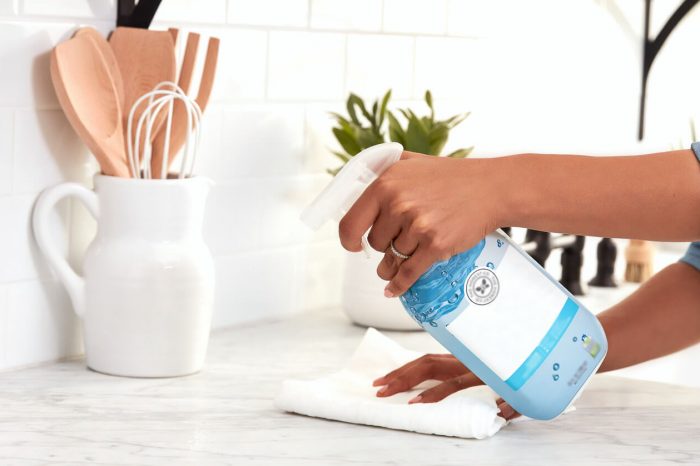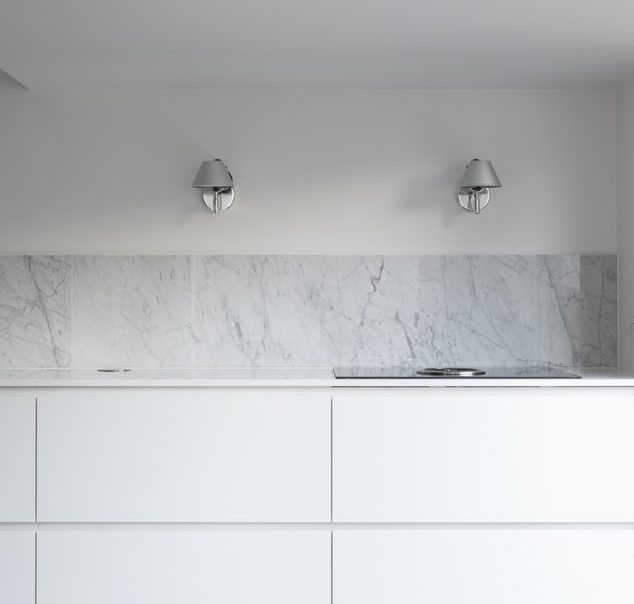How To Clean Alabaster Sculpture
The stone needs a special care so that its beauty and elegance prevail over time. Simple care and maintenance will help preserve the stone's beauty for generations to come. LSI Stone recommends periodic cleaning of the natural stone.
Before you start cleaning, that are some crucial steps to understand the situation that you are facing. In order to reduce the stone damages caused by natural and human abrasion on the Natural stone, we introduce you this article to help you achieve better results.
First, it is important to recognize what type of stone finish you have. Although there are many stone finishes, these three are the most used.
- Polished: glossy surface that emphasizes the color and markings of the material as well as reflecting light.
- Honed: satin smooth surface with little reflection of light. It's mostly used for floors, stairs, treads, thresholds, and other locations where heavy traffic will wear off the polished finish.
That are many Do's and Don't's when it comes to clean and protect your natural stone surfaces.
What you should Do:
- Do dust mop floors frequently.
- Do protect floor surfaces with non-slip mats or area rugs and countertop surfaces with coasters, trivets, or placemats.
- Do clean surfaces with mild detergent or stone soap.
- Do thoroughly rinse and dry the surface with clean, clear water after washing.
- Do blot up spills immediately.
What you should Not Do:
- Don't use vinegar, lemon juice, or other cleaners containing acids on marble, limestone, travertine, or onyx surfaces.
- Don't use cleaners that contain acid such as bathroom cleaners, grout cleaners, or tub & tile cleaners.
- Don't use abrasive cleaners such as dry cleansers or soft cleansers.
- Don't mix bleach and ammonia; this combination creates a toxic and lethal gas.
- Don't ever mix chemicals together unless directions specifically instruct you to do so.
- Don't use vacuum cleaners that are worn. The metal or plastic attachments or the wheels may scratch the stone's surface.
Daily Cleaning Procedures and Recommendations
Countertop Surfaces:
- Clean stone surfaces with a few drops of neutral cleaner, stone soap (specific products from Lithofin for example), or a dishwashing detergent and warm water. Use a clean soft cloth for best results. Too much cleaner or soap may leave a film and cause streaks. Do not use products that contain lemon, vinegar, or other acids on marble or limestone. Do not use scouring powders or creams; these products contain abrasives that may scratch the surface.
Floor Surfaces:
- Dust mop interior floors frequently using a clean, nontreated dry dust mop. Sand, dirt, and grit do the most damage to natural stone surfaces due to their abrasiveness. Mats or area rugs inside and outside an entrance will help to minimize the sand, dirt, and grit
that will scratch the stone floor. Be sure that the underside of the mat or rug is a non-slip surface.
Normal maintenance involves periodic washing with clean, potable water and neutral (pH 7) cleaners.
Bath and Other Wet Areas:
- Soap scum can be minimized by using a squeegee after each use. To remove soap scum, use a non-acidic soap scum remover or a solution of ammonia and water (about 1/2 cup ammonia to a gallon of water).
Frequent or over-use of an ammonia solution may eventually dull the surface of the stone.
Outdoor Pool and Patio Areas:
- In outdoor pool, patio, or hot tub areas, flush with clear water and use a mild bleach solution to remove algae or moss.
Exterior Stone Maintenance:
- The large expanses of stone generally found on exterior applications may make it impractical to perform normal maintenance on a frequent basis.
Large installations, however, should be given periodic overall cleaning as necessary to remove accumulated pollutants. Using products like Lithofin MN Power-Clean.
General Guidelines for Stain Removal:
1. Remove any loose debris.
2. Wiping the area will spread the spill.
3. Flush the area with plain water and mild soap and rinse several times.
4. Dry the area thoroughly with a soft cloth.
5. Repeat as necessary.
6. If the stain persists or for problems that appear too difficult to treat, call your stone care professional specialist.


General Steps for any kind of Natural Stone Surface:
- Sweep to remove any dirt particles.
- Fill a recepient of warm water and use only water, or mix it with a small amount of neutral liquid "All-Purpose-Cleaner", detergent or cleaning solutions specific for stone. Change the solution when it starts to get dirty.
- Dip a microfiber towel, a duster or a mop into the water mixture and start cleaning.
- Wash the area by starting at the corner of the room and working methodically towards the room exit.
- Allow air circulation in the room for a quick drying.
Solutions to specific problems:
Oil-based stains (grease, cooking oil tar, food stains etc.)
- Scouring powder with bleach
- Household detergent
- Ammonia
- Mineral spirits
- Methyl Chloride
Organic Stains (paper, tea, coffee, fruit, bark and leaf litter etc.)
- Pour Hydrogen Peroxide 35% directly on the stain and add a few drops of ammonia. Leave until bubbling stops
- Repeat above add poultice
- Acetone or Toluene or Xylene
Biological Stains (algae, moss fungi, mildew)
- Dilute ammonia or Bleach
- Hydrogen Peroxide or Sodium Hypochlorite
Iron Stains Inorganic Metal Stains (iron, rust, copper, bronze)
- Poultice
- Sodium Citrate and Glycerin
- Ammonium Oxalate
- Oxalic Acid Orthophosphoric Acid and Sodium Salt of EDTA in water
- Dilute Hydrofluoric Acid
- Ammonium Oxalate
Ink
- Light colored marbles only use Bleach or Hydrogen Peroxide
- Dark marbles use Lacquer Thinner or Acetone
- Methyl Chloride
Scratches
- Re-polish
- Re-hone
Paint Stain
- Lacquer thinner or scraped off carefully with a razor blade.
- Commercial liquid paint stripper.
- We don't recommend the use of acids or flame tools
To read more about this matter from our font, click here.
How To Clean Alabaster Sculpture
Source: https://lsi-stone.com/2020/02/18/how-to-clean-and-what-not-to-do-in-the-cleaning-of-natural-stone/
Posted by: colbertmaind1949.blogspot.com

0 Response to "How To Clean Alabaster Sculpture"
Post a Comment